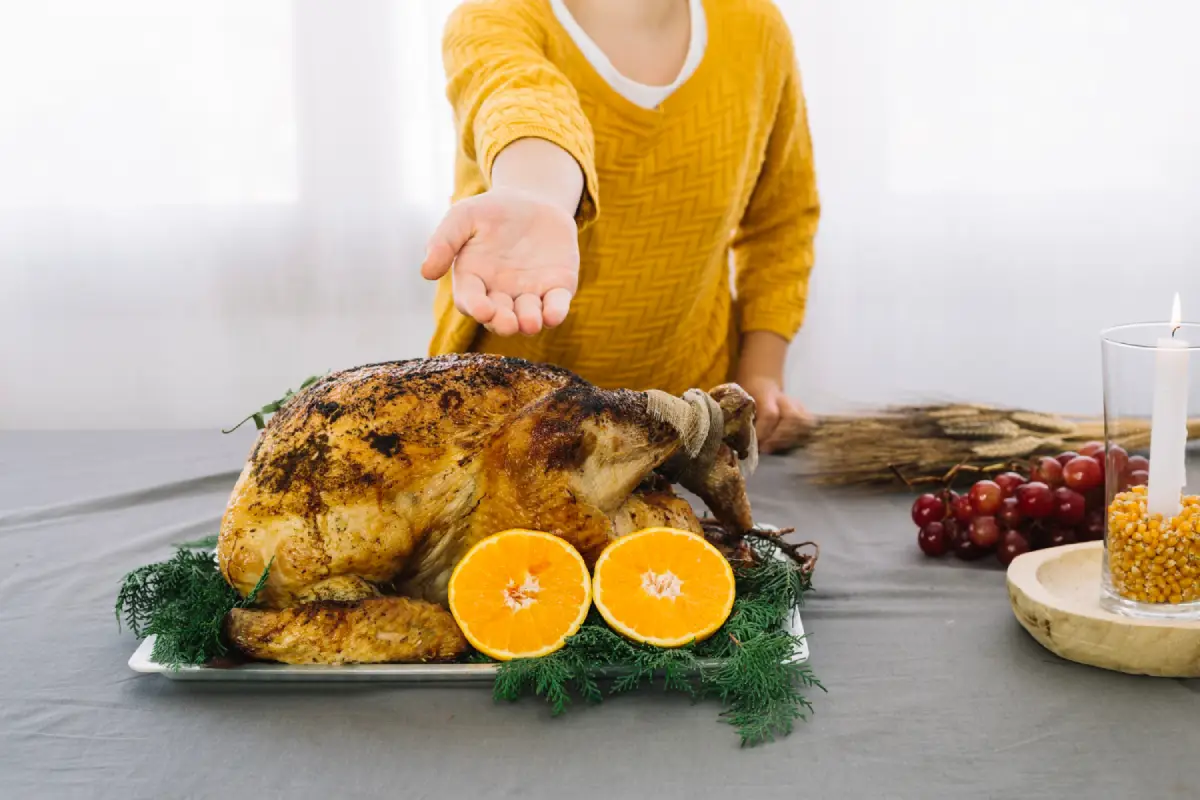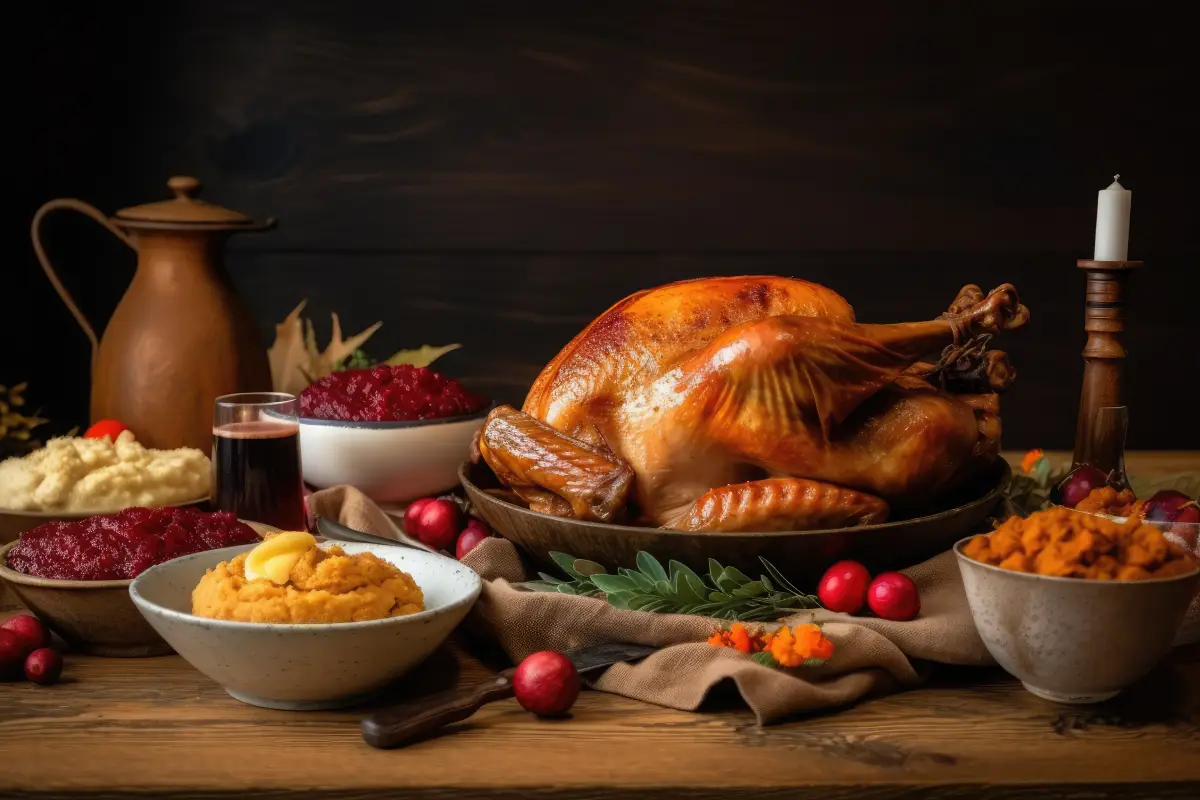Welcome to “Mastering the Art of Basting: How to Use a Baster for Perfect Cooking Results.” This guide is your key to understanding how to use a baster, an essential tool in any kitchen. Whether you’re an experienced cook or just starting out, learning to baste properly is crucial for delicious meals.
If you’ve explored our article on “turkey basters,” you know how important they are for a perfect turkey. But there’s more to basters than just turkeys. Here, we’ll explore their varied uses in different dishes.
We’ll cover the basics of what a baster is and how to use it. We’ll also dive into creative uses in your everyday cooking. So, let’s start this culinary journey and make your dishes more flavorful and juicy!
What is a Baster?
A baster is a simple yet powerful tool in the kitchen. It’s a long, tube-like utensil, typically made of plastic or glass, with a rubber or silicone bulb at one end. The design is straightforward: you squeeze the bulb to draw up liquid (like juices, marinades, or melted butter) and then release it to baste your cooking food.
Types of Basters:
- Glass Basters: Heat-resistant and durable, perfect for high-temperature cooking.
- Plastic Basters: Lightweight and affordable, suitable for casual cooks.
- Stainless Steel Basters: Robust and long-lasting, ideal for frequent use.
Each type has its own benefits, and the choice often depends on personal preference and cooking style. Whether it’s for a Thanksgiving turkey or a Sunday roast, a baster helps you evenly distribute flavors and maintain moisture in your dishes.
Understanding the simple yet effective design of a baster will enable you to use it to its full potential, transforming your cooking experience.
The Role of a Baster in Cooking
A baster isn’t just a tool; it’s an essential player in the culinary world. Here’s a closer look at its pivotal roles:
- Moisture Retention: Firstly, a baster’s primary function is to keep meats moist. By basting, you reintroduce the juices onto the meat, preventing dryness. This is especially crucial for long cooking times.
- Flavor Enhancement: Additionally, basters are perfect for spreading flavors. They evenly distribute marinades or herb-infused broths, ensuring every bite is flavor-packed.
- Even Cooking: Furthermore, regular basting promotes even cooking. It guarantees that all parts of the dish receive consistent heat and moisture.
In relation to turkey basting, as highlighted in our parent article, the baster’s role is invaluable. It allows for precise, even application of juices, contributing to a moist, flavorful turkey with a beautifully browned exterior.
Moreover, the versatility of basters extends beyond turkey. They are excellent for roasting chicken, basting briskets, or adding broth to vegetables. Understanding these roles can elevate your cooking, making dishes more enjoyable.
Step-by-Step Guide: How to Use a Baster
Mastering the use of a baster is straightforward with these steps. Follow this guide for optimal results:
- Preparation:
- Firstly, ensure your baster is clean and ready. This step is crucial for hygiene and efficiency.
- If basting meat, allow the cooking juices to accumulate in the pan.
- Drawing Up the Liquid:
- Next, squeeze the bulb before submerging the tip in the liquid. This action prepares the baster to draw up the liquid.
- Gently release the bulb. This will fill the tube with the desired liquid.
- Basting:
- Now, hold the baster over your dish and gently squeeze the bulb. This releases the liquid evenly.
- Focus on distributing the liquid evenly, especially over drier areas.
- Repeating the Process:
- Additionally, for longer cooking times, repeat the basting every 30 minutes. This ensures a continuous infusion of moisture and flavor.
- Consistency here is key to maintaining the dish’s quality.
- Post-Use Cleaning:
- Finally, after use, disassemble the baster if possible and wash it thoroughly. A clean tool is essential for future cooking sessions.
- Ensure no residue is left, as it can impact the baster’s performance and hygiene.
Moreover, when basting a turkey, as discussed in our parent article, pay special attention to the meat’s thicker parts. Also, avoid puncturing the skin to retain the juices. For additional insights and variations, you might find Food Network’s guide on basting techniques helpful.
By following these steps, you’ll elevate the taste and texture of your dishes. Basting, though simple, can significantly impact your cooking’s outcome.
Creative Uses of a Baster Beyond Turkey
Basters are renowned for their role in turkey preparation, but their utility extends far beyond. Here are some innovative ways to incorporate it into your daily cooking routine:
- Roasting Chicken and Other Meats:
- Firstly, a baster works wonders for chicken, beef, or pork. Regularly basting with juices or marinades infuses depth and flavor into these meats.
- Vegetable Dishes:
- Additionally, a baster is ideal for drizzling olive oil or butter over vegetables. This method not only enhances flavor but also promotes even cooking.
- Fish and Seafood:
- Furthermore, for fish and seafood, a baster is invaluable. Gently apply butter or broth to add moisture and flavor while preserving the delicate texture.
- Basting with Wine or Broth:
- Moreover, for a gourmet twist, try basting meats or vegetables with wine, beer, or broth. This technique imparts complex flavors, elevating your dish to a new level. If you’re interested in basting with wine, these tips on cooking with wine can elevate your culinary creations.
- Desserts:
- Finally, in the realm of baking, a baster can be surprisingly useful. Use it to apply syrups or liqueurs to cakes, enhancing moisture and flavor.
Experimenting with various liquids, such as herb-infused oils or fruit juices, can introduce exciting new flavors to your dishes. Ultimately, the baster is a versatile tool, limited only by your culinary creativity.
In essence, the baster is not just for Thanksgiving; it’s an adaptable tool that can amplify the taste and enjoyment of a wide array of dishes.
Maintaining Your Baster
Proper care and maintenance of your baster are essential for its longevity and effectiveness. Here are some key tips to keep your it in top condition:
- Immediate Cleaning:
- After each use, it’s crucial to clean your baster promptly. Leftover juices or marinades can harden, making cleaning more difficult later.
- Disassembling for Cleaning:
- If possible, disassemble your baster. Remove the bulb and clean each part separately. This ensures that no residue is left inside.
- Using the Right Cleaning Agents:
- Use warm, soapy water for cleaning. For tougher residues, a mixture of vinegar and baking soda can be effective.
- Thorough Rinsing and Drying:
- Rinse all parts thoroughly with clean water. Then, allow them to dry completely before reassembling. Moisture left inside can lead to mold growth.
- Storing Properly:
- Store your baster in a dry, cool place. Avoid squashing the bulb when storing, as this can deform it and affect its suction ability.
Additionally, periodic checks for any damage or wear are important. If the bulb or tube shows signs of cracking or deterioration, it might be time to replace it. For more detailed tips, check out this expert advice on cleaning and maintaining kitchen equipment.
By following these maintenance tips, you can ensure that your baster remains a reliable and hygienic tool in your kitchen arsenal.
FAQs
Here we address some frequently asked questions about basters to give you a better understanding of this versatile kitchen tool.
Where is a baster used?
A baster is primarily used in the kitchen for cooking meats, poultry, and other dishes. Its main role is to moisten, flavor, and ensure even cooking of food.
What do you do with a baster?
You use a baster to draw up cooking liquids, like meat juices, marinades, or melted butter, and evenly distribute them over food. This technique enhances flavor and moisture in the dish.
What’s the meaning of baster?
A baster is a kitchen utensil consisting of a tube with a rubber bulb. It’s used to suction up liquids and then release them over food for basting.
Do you really need a baster?
While not an absolute necessity, a baster is a highly useful tool for specific cooking tasks. It’s especially valuable for keeping roasted meats moist and flavorful.
Conclusion
Throughout this guide, “Mastering the Art of Basting: How to Use a Baster for Perfect Cooking Results,” we’ve explored the versatile world of basters. From understanding what a baster is, to learning how to use it effectively, and discovering its multiple uses beyond just turkey, we’ve covered a lot of ground.
Remember, a baster is more than just a tool for Thanksgiving; it’s a year-round ally in your kitchen that can enhance flavors and textures in a variety of dishes. Whether you’re roasting meats, preparing vegetables, or even experimenting with desserts, it can add that extra touch of culinary magic.
By maintaining your baster properly, you ensure that this simple yet effective tool is always ready to elevate your cooking experiences. We hope this guide has inspired you to explore new culinary possibilities with your baster and to enjoy the delicious results it can bring to your table.
Happy cooking, and may your dishes always be flavorful and perfectly moistened!



